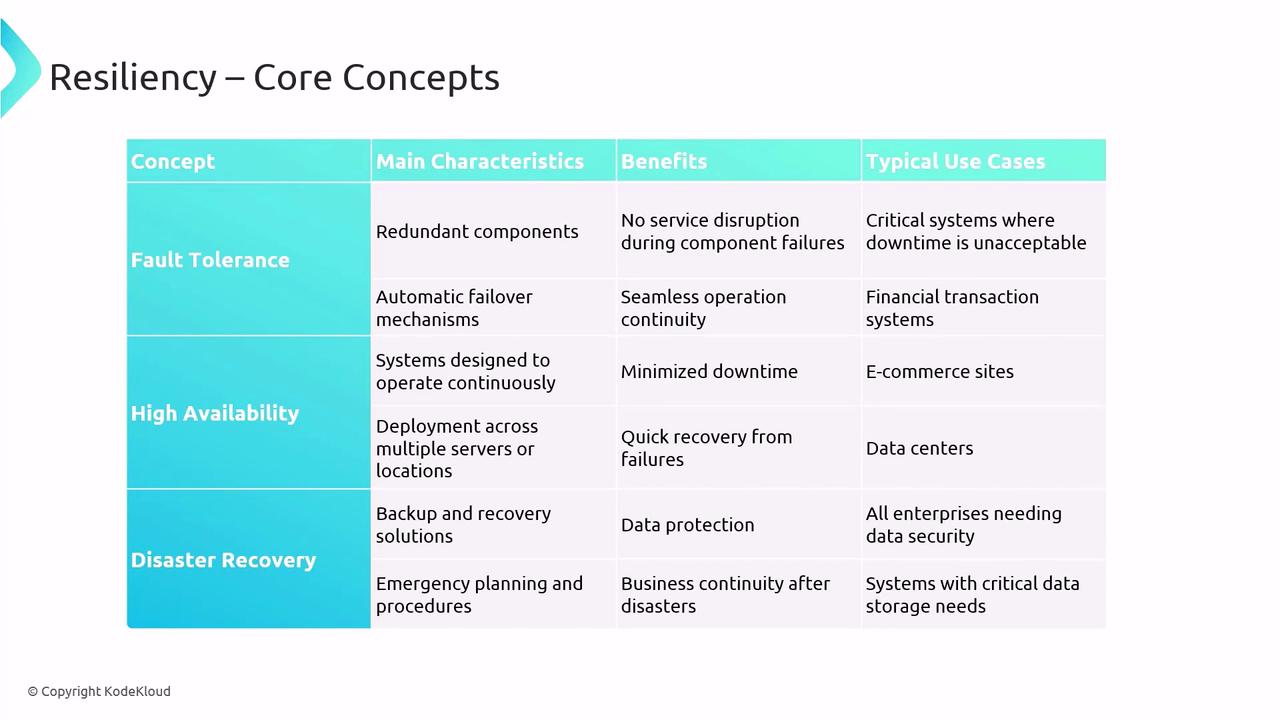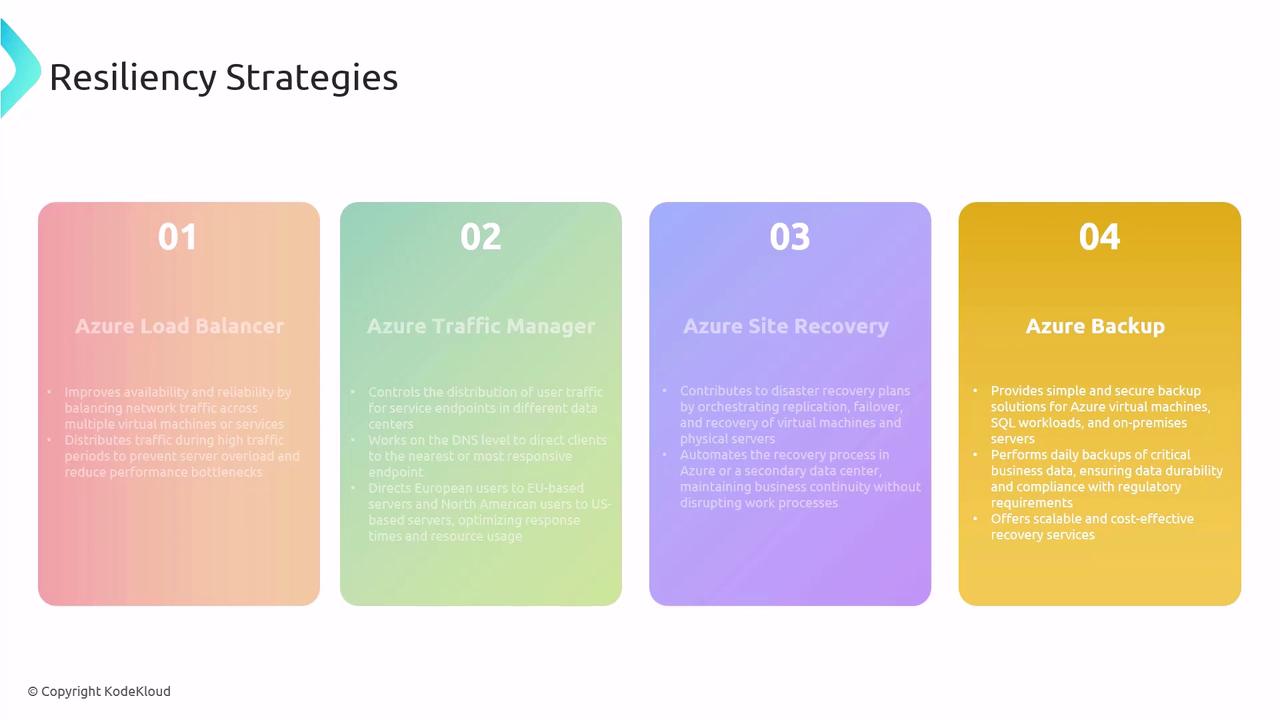AZ-400: Designing and Implementing Microsoft DevOps Solutions
Design and Implement Deployments
Design and implement a resiliency strategy for deployment
In this guide, we’ll walk through how to architect and deploy a resilient solution on Microsoft Azure. You’ll learn foundational concepts, best practices, and Azure services to ensure your applications remain available and recover quickly in the event of failures.
What Is Resiliency?
Resiliency in cloud architecture means designing systems that can absorb failures at any layer—compute, network, or storage—and recover with minimal impact. Since cloud providers manage hardware, it’s your responsibility to build redundancy, automate failover, and plan for disaster recovery to keep services online.
Why Resiliency Matters in Azure
Downtime can translate to lost revenue, customer dissatisfaction, and compliance issues. Azure offers a rich set of tools—from Availability Zones to managed backups—to help you meet strict uptime and recovery objectives. By embedding resiliency into your design from day one, you:
- Minimize single points of failure
- Reduce manual intervention during outages
- Achieve faster recovery times (RTO) and minimal data loss (RPO)
Core Resiliency Concepts
Before diving into Azure-specific solutions, understand these three pillars:
Fault Tolerance
Architect components so that no single failure causes a complete outage. This usually involves active/active or active/passive redundancy.High Availability (HA)
Use load balancing, clustering, and automated failover to maximize uptime. Aim for an SLA that meets your business requirements.Disaster Recovery (DR)
Prepare for catastrophic events with off-site backups, geo-replication, and documented playbooks to restore operations quickly.
Each layer addresses different risks, but together they form a complete resiliency posture.
Note
Consider defining your Recovery Time Objective (RTO) and Recovery Point Objective (RPO) early in the design phase. These metrics drive choices around redundancy, backup frequency, and failover strategies.
Comparing Fault Tolerance, HA, and DR

- Fault Tolerance: no single point of failure, ideal for mission-critical workloads (e.g., financial transactions)
- High Availability: automated failover and load distribution, crucial for near-constant uptime (e.g., e-commerce)
- Disaster Recovery: off-site backups and replication, essential for compliance and data protection
Key Resiliency Strategies in Azure
Redundancy
- Distribute resources across Availability Zones or paired regions
- Use geo-redundant storage (GRS) for critical data
Failover Mechanisms
- Implement Azure Traffic Manager for DNS-level load balancing and endpoint health checks
- Configure Azure Front Door or Application Gateway for global routing and web application firewall
Automated Backups
- Schedule Azure Backup for VMs, SQL databases, and file shares
- Use Azure Site Recovery to replicate on-premises VMs and orchestrate failover
Warning
Extra redundancy often increases cost. Balance availability requirements against budget constraints by selecting the appropriate tier (Standard vs. Premium) and replication option (LRS vs. GRS).
Azure Services for Resiliency
Use the following Azure services to build fault-tolerant, highly available, and recoverable architectures:
| Service | Purpose | Key Features |
|---|---|---|
| Azure Load Balancer | Distributes traffic across VMs or instances | TCP/UDP load balancing, zone redundancy |
| Azure Traffic Manager | DNS-based routing for global endpoints | Priority, weighted, performance, geographic |
| Azure Site Recovery | Orchestrates failover and failback of VMs | Continuous replication, automated failover runbooks |
| Azure Backup | Automated backup and restore for cloud and on-prem | Application-consistent snapshots, long-term retention |

Further Reading and References
- Azure Architecture Center: High Availability
- Azure Backup Documentation
- Azure Site Recovery Documentation
By following these principles and leveraging Azure’s resiliency services, you can design deployments that withstand failures and meet demanding SLAs.
Watch Video
Watch video content